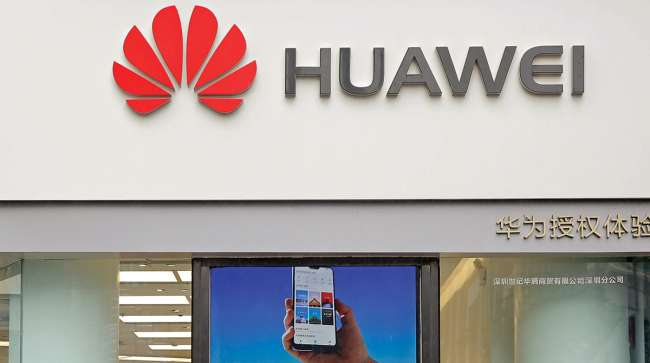Senior Reporter
Truckers Work to Purge Systems of Banned Chinese Technologies, but Challenges Remain

[Stay on top of transportation news: Get TTNews in your inbox.]
Most motor carriers doing business with the federal government are believed to have responded to a requirement that they do their best to purge technology systems of five banned Chinese technology providers said to be potential hackers into U.S. intelligence and defense agencies’ information systems.
But challenges remain in locating some of the nearly 300 affiliates and subsidiaries of the Chinese companies identified by one sophisticated data security company.
The five companies are Huawei Technologies Co., ZTE Corp., Hytera, Hikvision and Dahua Technology.
The requirement for all companies, including truckers, doing business with the federal government is a provision in Section 889 of the 2019 fiscal defense authorization bill. Those companies that do not comply with the requirement risk losing their contracts with the government.

Next-level technologies hold the potential to enhance safety and efficiency in transportation, but it takes a lot of work behind the scenes to advance these ideas from concept to reality. We talk with Christoph Mertz of the Robotics Institute at Carnegie Mellon and Huei Peng of the University of Michigan. Hear a snippet above, and get the full program by going to RoadSigns.TTNews.com.
The technologies in question can range from cameras, cellphones and computers to GPS products, onboard truck technologies and computer routers.
“But part of the problem is that it’s not always crystal clear exactly what to do, or what products you have to avoid in order to be compliant,” said Henry, a transportation regulatory specialist with the law firm of Scopelitis, Garvin, Light, Hanson & Feary P.C. “So it becomes partly a matter of judgment. It’s plain to say that carriers doing business with the government that I have spoken to have all taken substantial efforts to be in compliance.”
Charles Phillips, a trucking executive and first vice chairman of ATA’s Government Freight Conference, said that the difficulty of the search for affiliates and subsidiaries of the five Chinese tech providers was discussed at a freight conference meeting earlier this month.
Phillips said the regulatory requirement does not identify the subsidiaries of the banned Chinese tech companies.
“It would be nice to have a government repository that would allow motor carriers to go into and see all the subsidiaries and other companies that carriers can’t buy from,” said Phillips, president of Bennett Motor Express. “We talked about pursuing asking the government for a repository. It’s on our docket to work toward.”
Indeed, when Section 889 came on the scene, Armis, an agentless device security platform, identified 291 affiliates and subsidiaries of the five companies. “The release of the Federal Acquisition Regulation Ban 889 has impacted many organizations, gaining visibility at the board level,” the company said.
Working with a Fortune 100 company, Armis said it realized early on that there was significant concern not only about how companies would be able to identify the impacted devices, but also how critical it was to be able to show compliance so that it did not negatively impact business.

“The biggest issue has been one of identification of devices across the entire enterprise, and this does include devices manufactured by the subsidiaries as well,” said Armis spokeswoman Susan Torrey. “We at Armis performed a deeper analysis to gain a better understanding of the five vendors and also identified 291 subsidiaries as part of that research.”
“This includes having risk factors that can identify the specific manufacturers flagged by the U.S. government and alerting customers to their presence, so they can take appropriate action to remediate and demonstrate compliance,” Torrey said.
In a posting on its website last year, the National Defense Transportation Association said the law and regulation was the result of the U.S. National Counterintelligence and Security Center and the 2019 Worldwide Threat Assessment of the Intelligence Community.
“Chinese intelligence and security services may use Chinese information technology firms and their equipment as routine and systemic espionage platforms,” the post said. “The increasing reliance on foreign-owned or controlled equipment and services, and reliance on those that present national security concerns, creates vulnerabilities in U.S. supply chains.”
“This 889 thing is the most complex, far reaching, rippling public topic that I have ever dealt with,” Bill Wanamaker, then executive director of ATA’s Government Freight Conference, said in October 2020. “It means that if you do not make the representation that says you are 889-compliant by Oct. 23, 2020, you’re out of business. We cannot emphasize enough the necessity to use your corporate counsel in making your decisions about representation.”
Want more news? Listen to today's daily briefing below or go here for more info:

